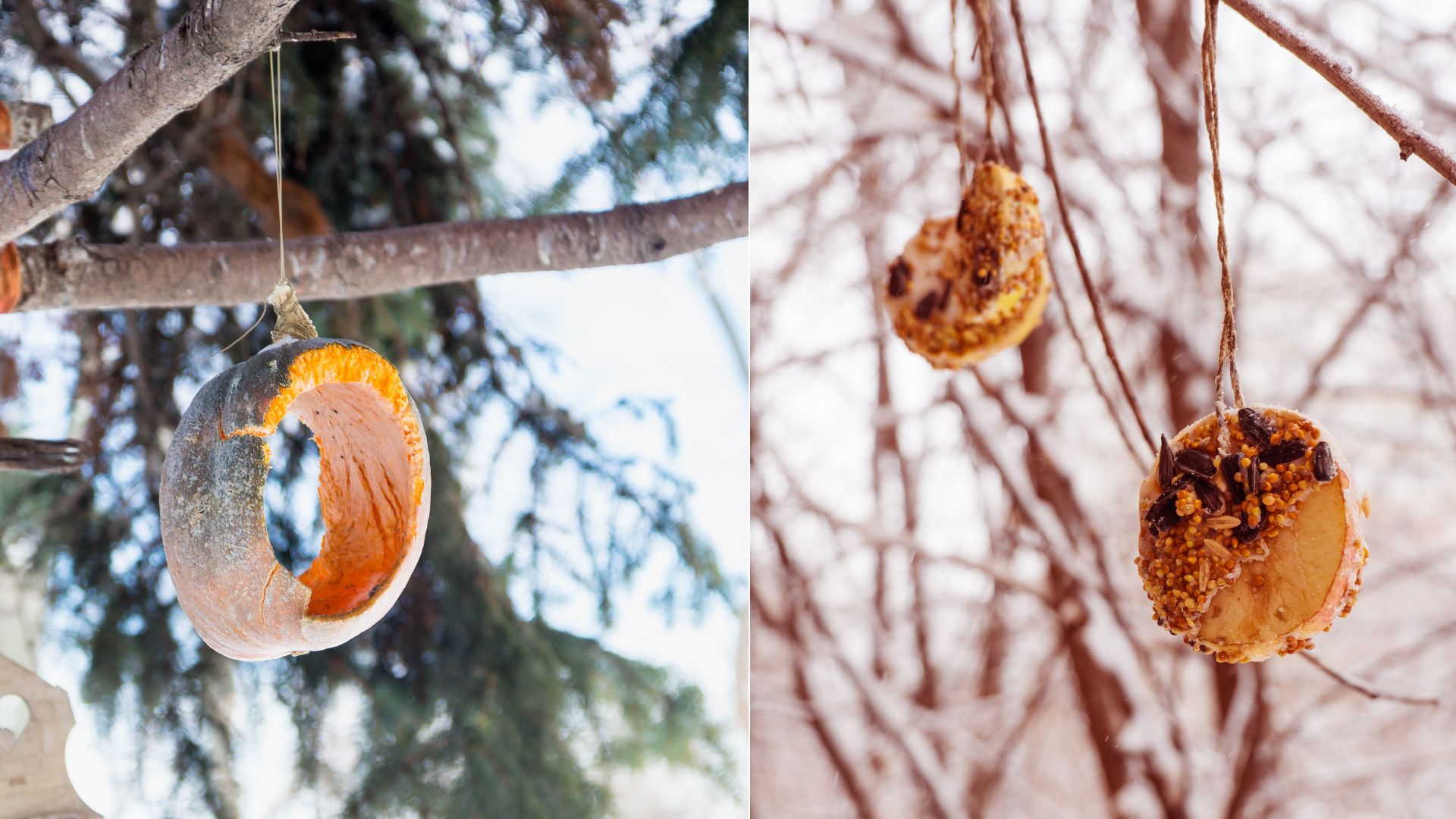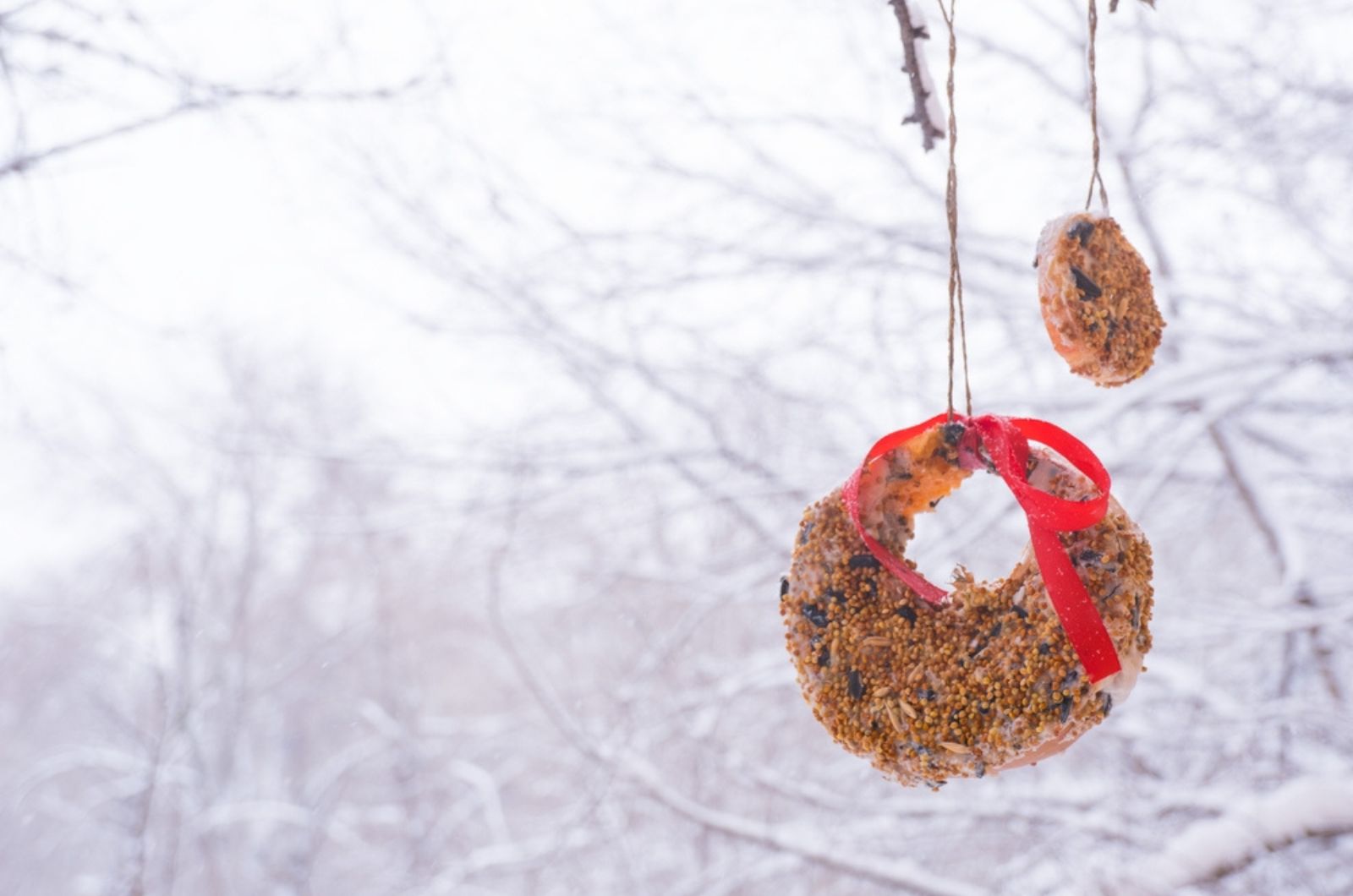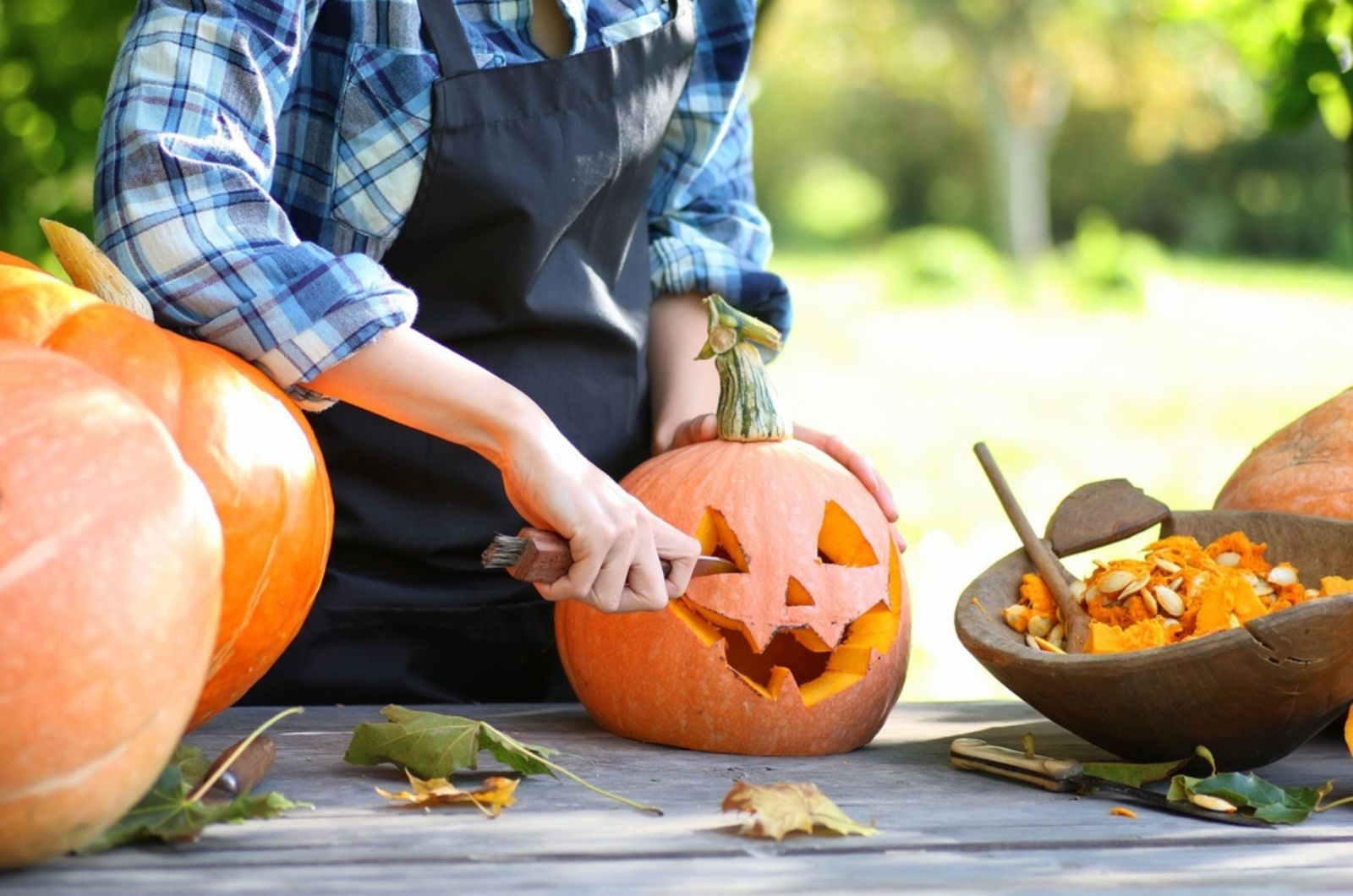Pumpkins are a sort of trademark of the fall season. But as soon as November arrives, the popularity of these plants significantly decreases and many don’t know what to do with their carved and intact pumpkins.
It’s often impossible to consume every pumpkin, so what to do? There’s one simple yet effective way to use the rest of these plants: make bird feeders!
In this article, I’ll show you how to make the perfect DIY pumpkin bird feeders for the fall. You’ll see a few different methods and the best thing is that they all work well for the classic Jack-o-Lantern!
Let’s get started!
Why Make Pumpkin Bird Feeders?
The first question that needs to be answered is what you get if you decide to use your leftover pumpkins for making bird feeders. Well, I’ve already mentioned that we can’t consume all of them, and discarding them shouldn’t be an option.
The second, and I believe even bigger benefit, is that you ensure a food source for birds. As you may know, there’s a lack of food for birds in many regions, so the least we can do is give them what we would otherwise throw away.
I have to say that pumpkin bird feeders look amazing in landscapes and they’ll add a special touch of beauty to your fall garden.
Now let’s see how to make them!
Making Open Pumpkin Feeders
The first method you can use to make bird feeders is to cut your pumpkins in half. You can do this with your intact pumpkins but it also works well on carved Jack-o-lanterns.
All you need to do is cut the crop in half horizontally with a sharp and clean cutting tool. This process is really simple but, of course, it depends on the type and weight of your pumpkins.
If you have an intact pumpkin, it’s advisable to remove the internal part.
Don’t discard the seeds but rather clean and dry them. You can roast them and have a delicious treat or you can simply add them to your feeder so that the birds have a treat.
Now it’s time for some drilling. You should drill four holes around the edge of each pumpkin half. Two holes should be on the top and bottom and two should be on the sides.
Regarding the size of the holes, they should be large enough to fit two dowel rods. Make sure the rods are long enough to go all the way through the pumpkin from one side to the other. Additionally, a few inches of the rod should stick out after inserting them.
Before you put the rods in holes, you should prepare a mixture of water and vinegar and soak both pumpkin halves in it. After a few seconds, take them out and leave them to dry well. This will prevent mold from developing inside the feeder.
Take the rods and tie them through the holes. Now, you need two pieces of twine; take one piece of twine and tie one end of it to one of the dowel rods. Do the same for the other piece of twine.
Take some birdseed and dry pumpkin seeds and put them in your feeder. Hang the feeder somewhere in your yard using the strings. Now the only thing left to do is enjoy watching birds as they’re feeding.
Jack-o-lantern As A Pumpkin Bird Feeder
Another method for making pumpkin bird feeders is by using carved Jack-o-lanterns. It’s possible to do it with intact crops but it’s easier to do it with older pumpkins because they’re already carved.
If you use intact pumpkins, cut off their tops and remove the guts. This is a common procedure when carving good old Jack-o-lanterns. Of course, now you don’t need to worry about visual appeal.
Now take a sharp cutting tool, such as a knife or even a handheld drill. Make multiple holes of different sizes on your pumpkins.
If you are using already carved pumpkins, you can drill a few holes in the back and sides. After you’re done with drilling, submerge your pumpkins in diluted vinegar to prevent mold development and let them dry well.
Select the desired spot for this feeder and fill it with birdseed and pumpkin seeds. Also, add some seeds around the feeder to attract birds.
The great news is that these feeders aren’t only good for birds but also for other wildlife.
The whole process isn’t complicated but the results are fantastic! There’s nothing better than the feeling after you see well-fed birds leaving your yard!



